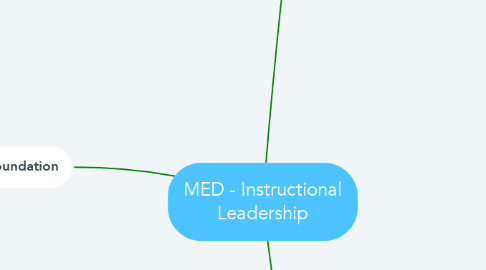
1. Diverse Students
1.1. EDU 665: Mild/Moderate Disabilities
1.1.1. Research based techniques and approaches: Useful for students with Specific Learning Disabilities (SLD), differentiation and scaffolding.
1.1.1.1. Assistive technologies (games, computer programs, web-based sites, school subscriptions, etc.) that help exceptional students acquire academic concepts and /or skills.
1.1.1.2. Mnemonic strategies
1.1.1.3. Fact sheets
1.1.1.4. Peer-Mediated Intervention
1.1.1.5. Language-intervention practice
1.1.1.6. Self-management instruction
1.1.2. Activity Based Instruction and Embedded Instruction: For engagement, differentiation, and RTI
1.1.3. Individual Education Plans: Useful to help teachers, parents, and students to understand their specific needs and how to support them.
1.1.3.1. A Parents’ Guide to Partnership in Special Education
1.1.4. Scientific research can provide a meaningful guide to special educators and other stakeholders when making decisions about what and how to teach learners with disabilities
1.2. EDU 633:Diverse Learners
1.2.1. Teachers to reflect on cultural and linguistic diversity
1.2.1.1. Teachers need to be culturally responsive in the classroom so that we can support them in the best way. Students learn effectively when it relates to their personal lives through cultural understanding.
1.2.2. BICS vs. CALP
1.2.2.1. Basic Interpersonal Communicative Skills: The development of conversational fluency in the second language
1.2.2.2. Cognitive Academic Language Proficiency: Describes the use of language in decontextualized academic situations
1.2.3. Project Based Learning
1.2.3.1. Stepping outside of the classroom to learn or bringing something from outside into the classroom to engage students in a deeper manner.
1.2.4. Universal design for learning
1.2.4.1. Giving all students an equal opportunity to succeed. For example, thinking of outside factors like poverty or language barriers that could affect student learning.
1.2.5. IDEA: Learning the history and process of IEPs is essential to supporting student needs.
1.2.5.1. The American Disabilities Act (ADA)
1.2.5.2. FAPE
1.2.5.3. LRE
1.3. EDU 660: Intro to Exceptional Children
1.3.1. Differentiated instruction is student centered: Not all students learn the same way. Students are diverse and have their own learning needs and practices that work best for them.
1.3.1.1. Differentiated instruction is more qualitative than quantitative
1.3.1.2. Exceptional learners
1.3.1.2.1. Learners with Emotional and Behavioral Disorders
1.3.1.3. Concept-based teaching
1.3.2. Addressing the needs of Advanced Learners: Some students are more advanced than others. Instead of giving students busy work, they should be challenged so that they continue to prosper.
1.3.2.1. Communication between parents and professionals
1.3.2.2. Gifted and Talented
1.3.3. Culturally Responsive Teaching: There are various factors that need to be considered when teaching students. Culture could mean a variety of things such as language, practices, beliefs, lifestyles, etc.
1.3.3.1. Ethnic groups and poverty
1.3.3.2. Multicultural and Bilingual Aspects of Special Education
2. Early Education/Foundation
2.1. EDU 726: Children's Literature
2.1.1. Valuing Literature for Children: Literature allow students to learn and explore through books. Fostering the love for literature leads to the enjoyment for learning.
2.1.1.1. Challenging perspectives on traditional literature
2.1.1.2. The Language of Picturebooks
2.1.1.3. Creating a climate for enjoyment
2.1.1.4. Challenging perspectives on historical fiction
2.1.2. How to utilize resources: To teach students how to utilize their resources, we as teachers have to understand and discover them ourselves.
2.1.2.1. Utilizing libraries
2.1.2.2. Online database
2.2. EDU 630: History & Profession of Education
2.2.1. Teaching Philosophy: Teachers must establish their why - why do we choose this profession? What do we hope to accomplish?
2.2.2. Relationship between education and social justice: Education correlates with social justice in multiple ways. Education is also a key towards change for a better future.
2.2.3. Multicultural education: Because students are so diverse, teachers approaches are also diverse. Teachers also need to consider how to expose students to multiple cultures, ideas, and knowledge so that they can become well-rounded students.
2.2.4. Culturally Responsive Teaching
2.2.5. Consideration of risk students and at-risk behaviors: There are factors that teachers cannot control. Teachers need to be able to respond to all student needs so that they can continuously teach and support students who struggle with school.
2.3. EDU 772: Adv Leadership & Guidance in ECE
2.3.1. Quality early childhood programs: Early education set up students for future success. It also provides students with the foundation necessary for future education.
2.3.1.1. Montessori education
2.3.1.2. Safe and nurturing environment
2.3.1.3. Teacher-child interactions in an early childhood classroom: emotional support, classroom organization, and instructional support.
2.3.1.4. Meetings and conferences
2.3.2. Assessments should be supporting the student rather than diminishing them: Assessments should be used to help better support students. Analyzing results of assessments allow teachers to understand how to change their approach so that students constantly improve.
2.3.3. Individual and cultural variations in our children and their families are important: Guardians and families are just as important as students. Family involvement provides and assure teachers that students are getting support at home.
2.3.3.1. Consider what kind of support students receive at home
2.3.3.2. Consider trauma and its effects
2.3.3.3. Building relationships with students’ families are important
2.3.3.3.1. Being involved in the classroom gives guardians insight into the child’s world at school
3. Curriculum Planning
3.1. EDU 636: Sem in Transformational Learning and Teaching
3.1.1. Curriculum
3.1.1.1. Activity-focused
3.1.1.2. Content-focused
3.1.1.3. Results-focused
3.1.2. Standard Based learning
3.2. EDU 701: Educational Research and Design
3.2.1. Research Proposal
3.3. EDU 635: Long/Short Range Planning
3.3.1. Long-Range Planning
3.3.1.1. Planning lessons with activities and tasks that give students a feeling of purpose and fulfillment
3.3.1.2. Year-long lesson planning
3.3.2. Short-Range Planning
3.3.2.1. Reflection is important everyday moving forward as making adjustments
3.3.2.2. Create objectives

